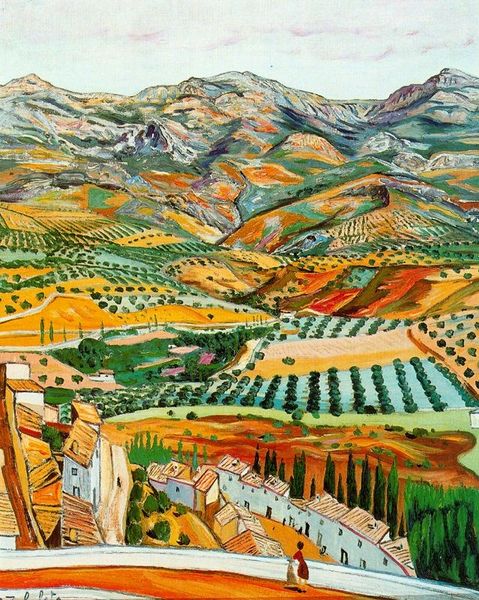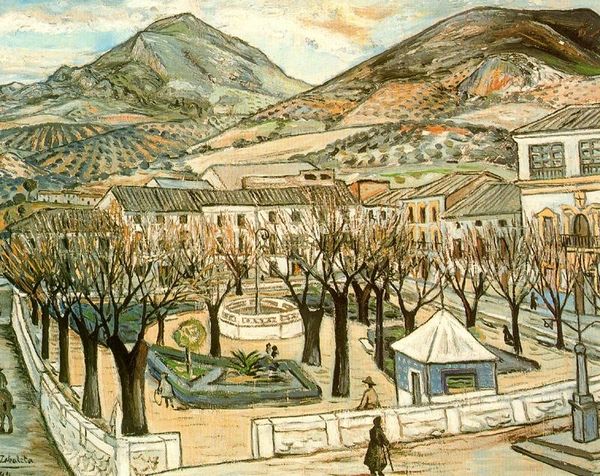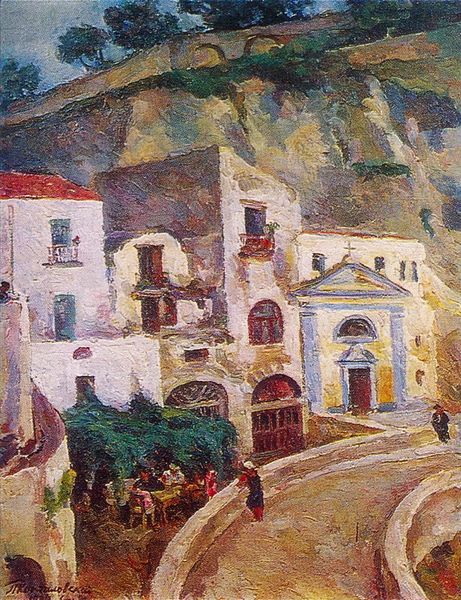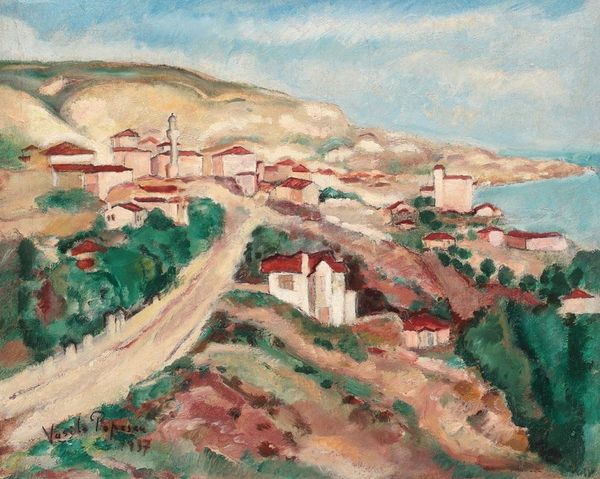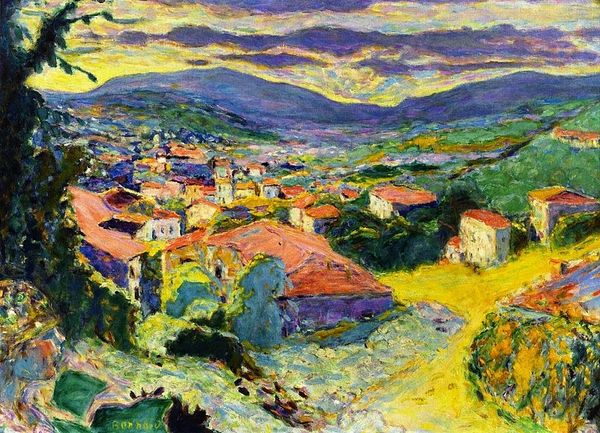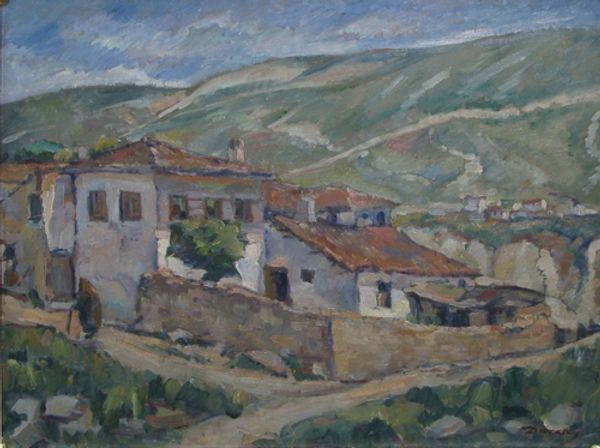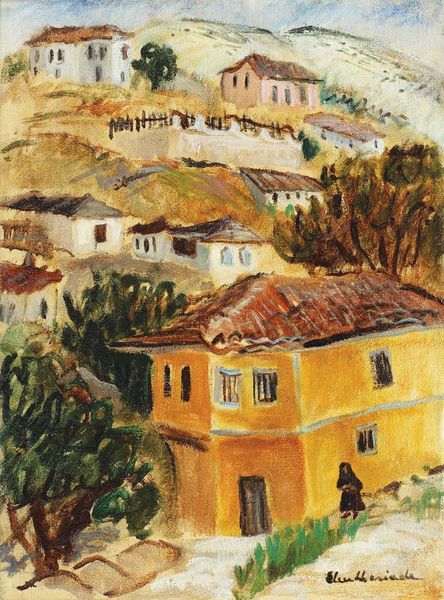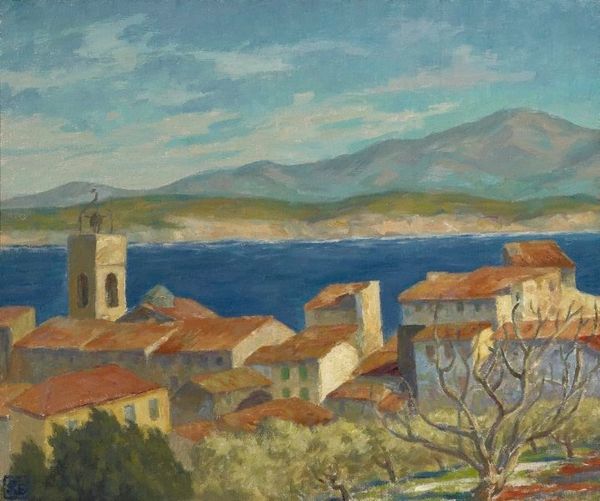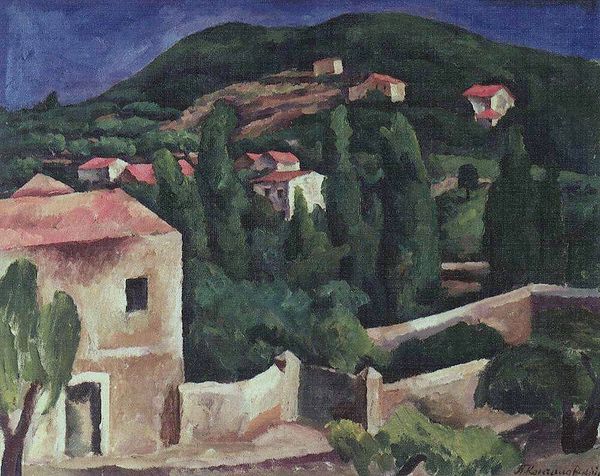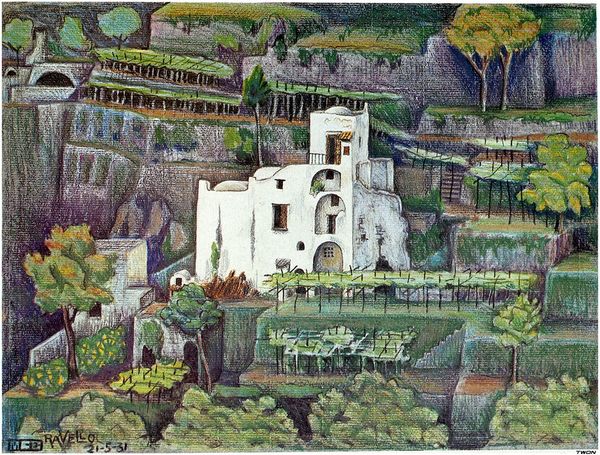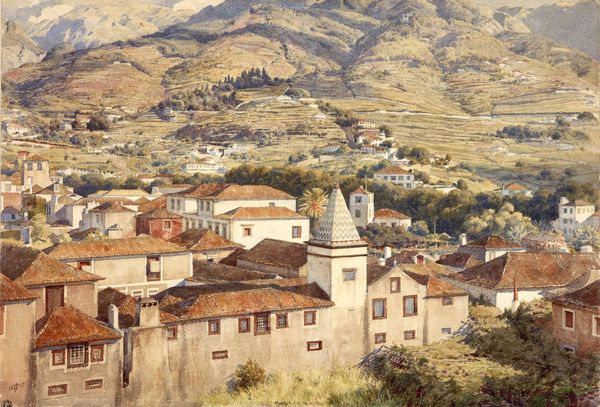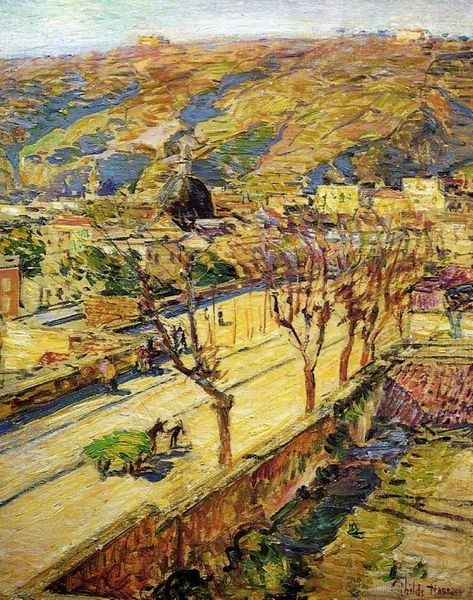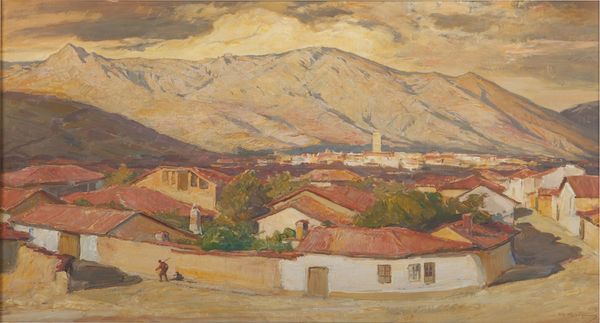
painting, acrylic-paint
#
painting
#
landscape
#
acrylic-paint
#
figuration
#
cityscape
#
modernism
#
realism
#
building
Dimensions: 81 x 100 cm
Copyright: Rafael Zabaleta,Fair Use
Curator: Standing before us is Rafael Zabaleta’s "Museum Garden," an acrylic painting dating back to 1957. The piece is an amalgamation of Realism and Modernism, offering a striking cityscape framed against a backdrop of formidable mountains. Editor: It feels so…deliberately constructed. Not in a cold way, but as if Zabaleta wanted to capture the inherent orderliness, that public ideal, within a cityscape but also celebrate the landscape it nestled into. It makes me wonder about town planning. Curator: I can understand that reaction. It has elements suggestive of an idealized space but it is simultaneously softened. Notice the white buildings with tiled roofs, and consider the symbolism inherent to Zabaleta’s stylistic choice. White has, throughout centuries, often represented purity, order, and hope. Editor: Are we intended to believe in the idea or in its reality? The clean lines suggest social ambition, but the mountain looms in the distance, implying that these are constructed realities, living beneath nature's gaze and whim. Was Zabaleta considering what towns really stand for? Curator: Exactly! Towns emerge as spaces for congregation, with people finding purpose, pleasure, and productivity in the controlled structures erected within a larger geographic zone. Think of how the positioning of each building impacts how people socialize. Note how the perspective lines focus your eyes on the buildings but then draw your sight to the mountains. This, as an allegory of progress, reminds me of 19th-century landscape traditions. Editor: So the 'garden' itself, then, would function as this stage or, say, microcosm, of a controlled ideal, a balance between architecture, citizenry, and landscape? The very picture of mid-century ambition, if you think of new towns and cities built after WWII. Curator: Indeed. Notice how he also includes details suggesting public life like little figures that are clearly taking strolls. I also wonder what drove his stylistic choices as, from a symbolic perspective, both Realism and Modernism reflect different forms of authenticity and truth. Editor: To me, it reflects our tendency to aestheticize socio-political ambitions and bend those concepts, ideas, and movements to human desire, aspiration, or even propaganda. Curator: It has definitely provided a thoughtful insight, exploring ideas through constructed urban landscape! Editor: Yes, definitely more to consider about mid-century cultural ambition and our relationship to natural landscapes!
